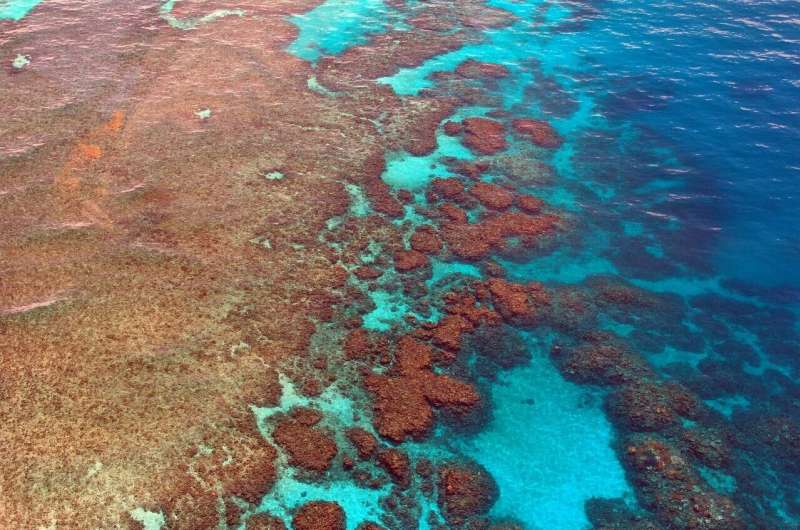Research shows airborne microbes link Great Barrier Reef and Australian continent

A team of researchers led by Yale-NUS College Professor of Science (Environmental Studies) Stephen Pointing has discovered a link between two different ecosystems, continental Australia and the Great Barrier Reef, due to airborne microbes that travel from the former to the latter. The finding showed that the health of these two ecosystems are more interconnected than previously believed, hence holistic conservation efforts need to span different ecosystems.
Microbes are fundamental to the health of ecosystems, playing roles such as providing energy, oxygen and carbon to other organisms and recycling nutrients from other organisms' waste products. Prof Pointing's team recently published two papers in established scientific journals Nature Microbiology and The ISME Journal (a Nature partner journal) on the role of microbes in connecting ecosystems, specifically how microbes from one ecosystem can have significant effects on the well-being of a completely different ecosystem.
The team's success has grown from development of a new apparatus and methodology to accurately study microbes in air—something that has never been previously done due to the low abundance of airborne microbes and how quickly they degrade once captured for sampling. The team's first paper, published in the June 2019 issue of the peer-reviewed journal Nature Microbiology, revealed this method and highlighted how some microbes survive better than others during transport in the air over the Southern Ocean.
Their second paper, published in The ISME Journal in November 2019, focused on the interconnectedness between earth, sea, and sky. Prof Pointing and his team observed that vital microbes essential for the flourishing of the Great Barrier Reef are present in the air, and are in fact transported through the air from other ecosystems like the Australian continental landmass.
While there has long been speculation that airborne microbes are absorbed into the Reef, this was the first study that confirmed the existence of such a link. Genetic testing highlighted that the most abundant shared species in the air and coral played important functional roles in both coral and soil ecosystems, suggesting that the atmosphere acts to connect these ecosystems by transporting microbes essential to the health of each between them.
Prof Pointing, who is also Director of the Division of Science at Yale-NUS, said, "In order to make effective policy decisions to protect our natural environment, it is vital to have reliable data on the level of connectivity between different ecosystems. The role that the air plays in ecosystem connectivity has not been appreciated until now. Our research provides empirical evidence that distant ecosystems on land and at sea are connected by the multitude of microorganisms such as bacteria and fungi that are transported in air currents between these ecosystems. Because microorganisms are so important to ecosystem health, any change to their transport patterns can have potentially catastrophic environmental impacts."
The team's third paper, specially commissioned by Nature Microbiology and published on 28 January 2020, is a position paper setting the direction of research in the field for the next five to 10 years. It explores ways in which human activity affects how microbes are transported in air, such as how pollution particles in the atmosphere can kill microbes, or disrupt or alter their transport patterns. It also explores the potential of some microbes to detoxify toxic polycyclic aromatic hydrocarbons (PAH) compounds in the air, which are known to cause cancer in humans, although further research is required to determine the feasibility of such an endeavour.
More information: Stephen D. J. Archer et al, Anthropogenic impact on the atmospheric microbiome, Nature Microbiology (2020). DOI: 10.1038/s41564-019-0650-z
Stephen D. J. Archer et al. Air mass source determines airborne microbial diversity at the ocean–atmosphere interface of the Great Barrier Reef marine ecosystem, The ISME Journal (2019). DOI: 10.1038/s41396-019-0555-0
Stephen D. J. Archer et al. Airborne microbial transport limitation to isolated Antarctic soil habitats, Nature Microbiology (2019). DOI: 10.1038/s41564-019-0370-4
Journal information: ISME Journal , Nature Microbiology
Provided by Yale-NUS College


















